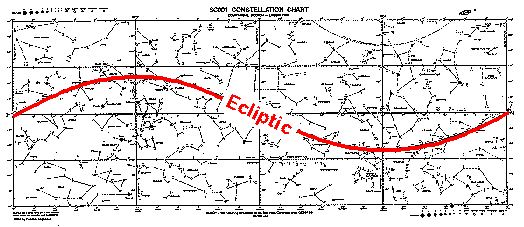
On about March 21 the Sun moves (following the ecliptic right in the middle of the SC001) from the southern hemisphere to the northern hemisphere thus crossing the celestial equator. This intersection point is called the vernal equinox, and is by definition RA=0h.
About 3 month later on about June 21, the Sun reaches its maximum declination of 23½°. This point is called the summer solstice. Note that it has RA=6h.
About 3 months after that on about September 21, the Sun crosses from the northern hemisphere to the southern hemisphere, thus crossing the celestial equator. This point is called the fall equinox. Note that it has RA=12h.
About 3 months after that on about December 21, the Sun reaches its most southerly declination: -23½°. This point is called the winter solstice. Note that it has RA=18h.

Thus in its yearly journey on the ecliptic, the Sun travels through 24h of RA in 12 months: and average rate of 2h/month. (Don't forget that as viewed from the Earth, the celestial sphere is rotating at a rate of 1h or RA per hour of time.)
| Occasion | Approx. Date | Sun's | |
|---|---|---|---|
| RA | dec | ||
| vernal equinox | March 21 | 0h | 0° |
| summer solstice | June 21 | 6h | 23½° |
| fall equinox | September 21 | 12h | 0° |
| winter solstice | December 21 | 18h | -23½° |
For Folks without an HTML2 browser:
Significant Occasions on the Ecliptic
Approx. Sun's
Occassion Date RA dec
vernal equinox March 21 0h 0°
summer solstice June 21 6h 23½°
fall equinox September 21 12h 0°
winter solstice June 21 18h -23½°